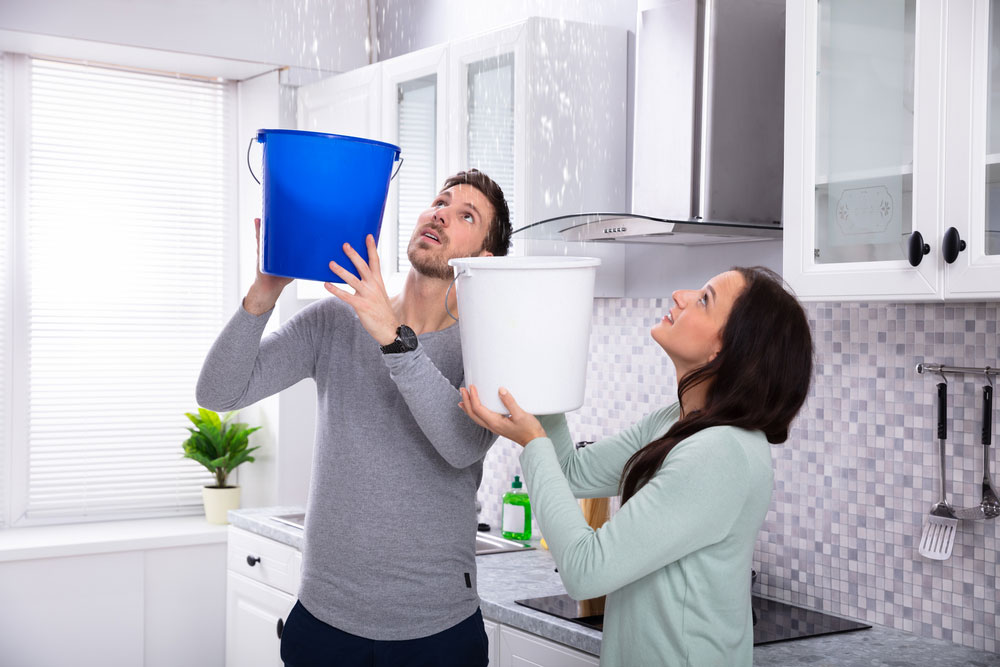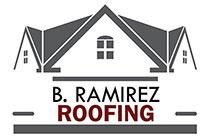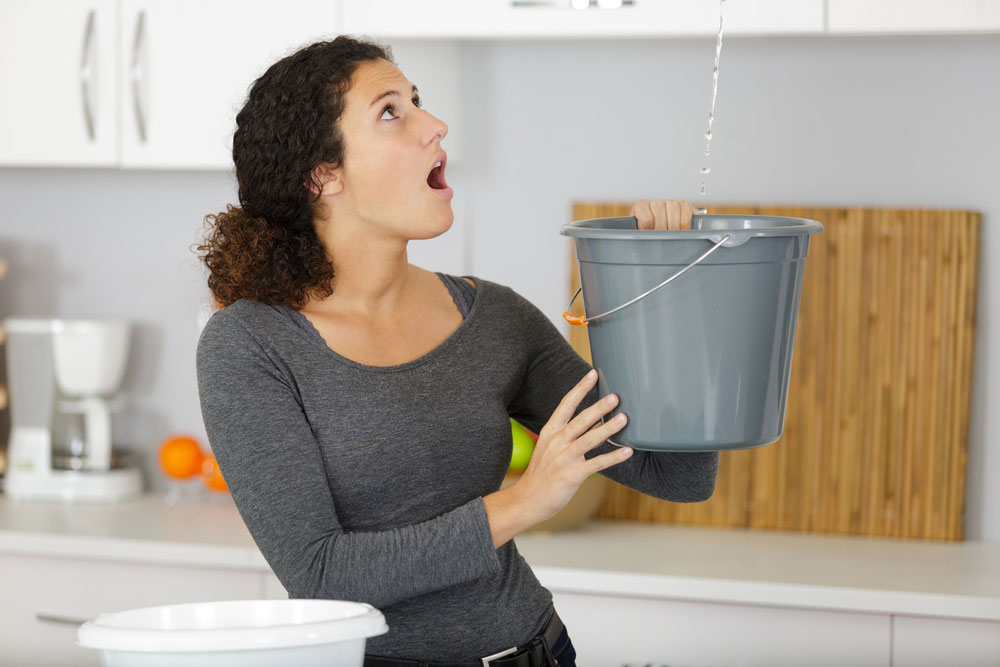Finding that dreaded brown spot on your ceiling can be a cause for concern, because all that water will eventually break through as you’re scrambling to find buckets or pots to catch it. Not to mention, all the damage that a leak can do to the rest of your home. You might even find mold that can put you and your family at risk. The last thing you want is a roof leak, because no one likes the idea of having to find a drip bucket every time it rains. But, it’s a much larger problem than having to find something to catch the water. That one tiny drip can be the symptom of a much larger issue.
Here are some of the most common causes of roof leaks.
#1: Cracked Flashing
These thin pieces of metal are installed under your shingles and on your roof joints to create a water-resistant barrier, which can be concealed or exposed. If it’s exposed, it will look like long runs of sheet metal. If it’s concealed, it will have a rubberized coating overtop. But broken flashing will have large cracks. Roofers will use tar to seal the flashing, but it can corrode over time. If the flashing is left exposed, various elements (such as wind and rain) can cause it to crack.
#2: Broken Shingles
Because they make up your roof’s exterior layer, you should be able to see any broken or missing shingles by looking for any different-colored patches on your roof. You may even see them scattered around your yard after a heavy storm.
#3: Valleys That Aren’t Properly Sealed
Valleys are areas where two roof planes come together. Because they’re usually sloped, rainwater can get inside and run down the roof if they’re not properly sealed. You can find these problems by looking for wet spots that run along the seams of your roof, which can happen for a variety of reasons. The sealing may not have been done properly, or it might have cracked because it got stepped on. Even an excess amount of rain may have caused it to erode over time.
#4: Cracked Vent Booting
Roof vents look like small pipes that stick out of the top of your roof, and they’re used to get rid of any excess moisture from the inside of your home. Leaks in these areas will often leave dark spots and mustiness. Roof vents are usually sealed by placing some flashing around the opening and by slipping a tight rubber boot over the area where the pipe peeks out. This system can break over time, but problems in these areas can also be caused by roof decay.
#5: Skylights That Aren’t Installed Properly
Any leak caused by this kind of problem should be easy to find. If you see wet spots or always need to put drip buckets around the sides of your skylights, you have found the cause of the leak. But leaks and wet spots near the top of the skylight could be caused by the flashing instead.

#6: Clogged Gutters
Your gutters are there to keep water away from your roof. So when a blockage causes it to get clogged, that desired water flow will stop. This will cause rainwater to pool in a single area on your roof, which will give it more of an opportunity to seep through the cracks. To find this problem, you might be able to see leaves sticking out of your gutters when you look up toward your roof. If you can’t see any leaves, you might be able to see less water coming out of your downspouts when it rains.
#7: Cracked Chimney
You may eventually see signs of wear and tear along the mud cap or any mortared areas around the top of your chimney. There may also be holes in the mortared joints where it connects with the roof. There may even be some loose flashing and shingles.
#8: Condensation in Your Attic
Because it’s the topmost part of your home, the attic is stuck between indoor and outdoor temperatures. When they clash, condensation will form (which will lead to moisture). The leak is most likely coming from your attic if the area has signs of mold growth or mildew. If you notice a strong musty odor coming from the attic, it could be a sign that water has gotten inside.
If you’re looking for one of the best places for roof repair in Corpus Christi, be sure to get in touch with B. Ramirez Roofing.

